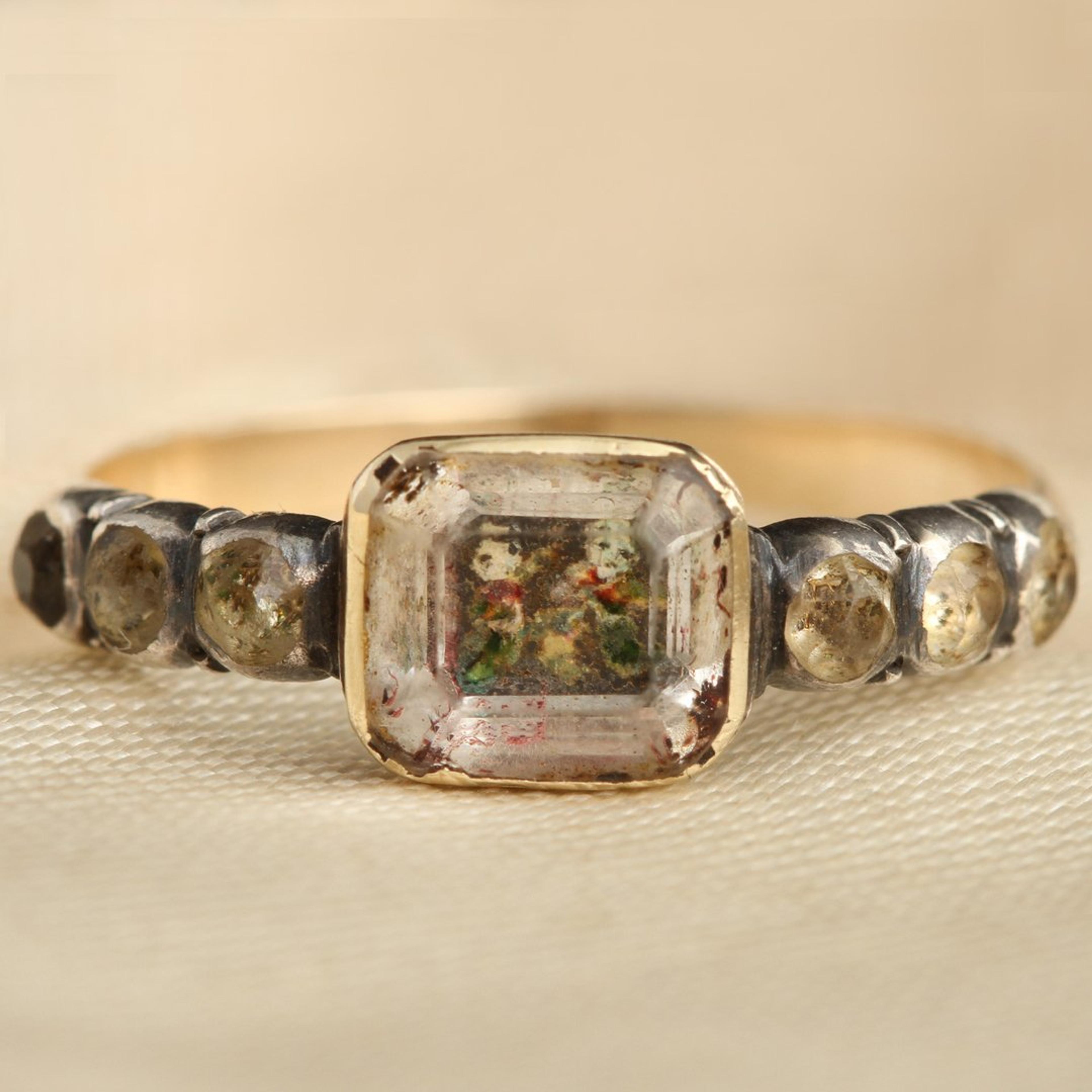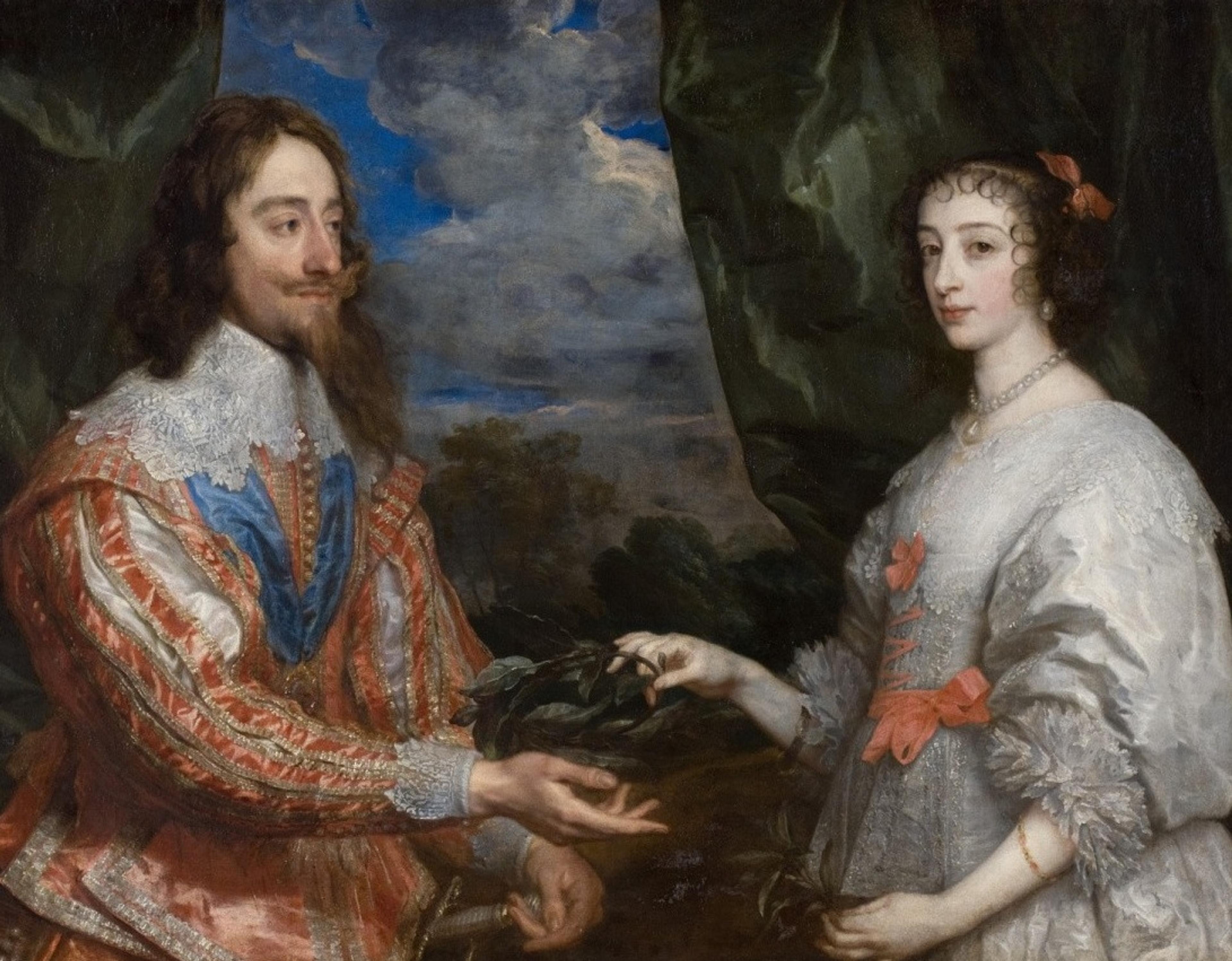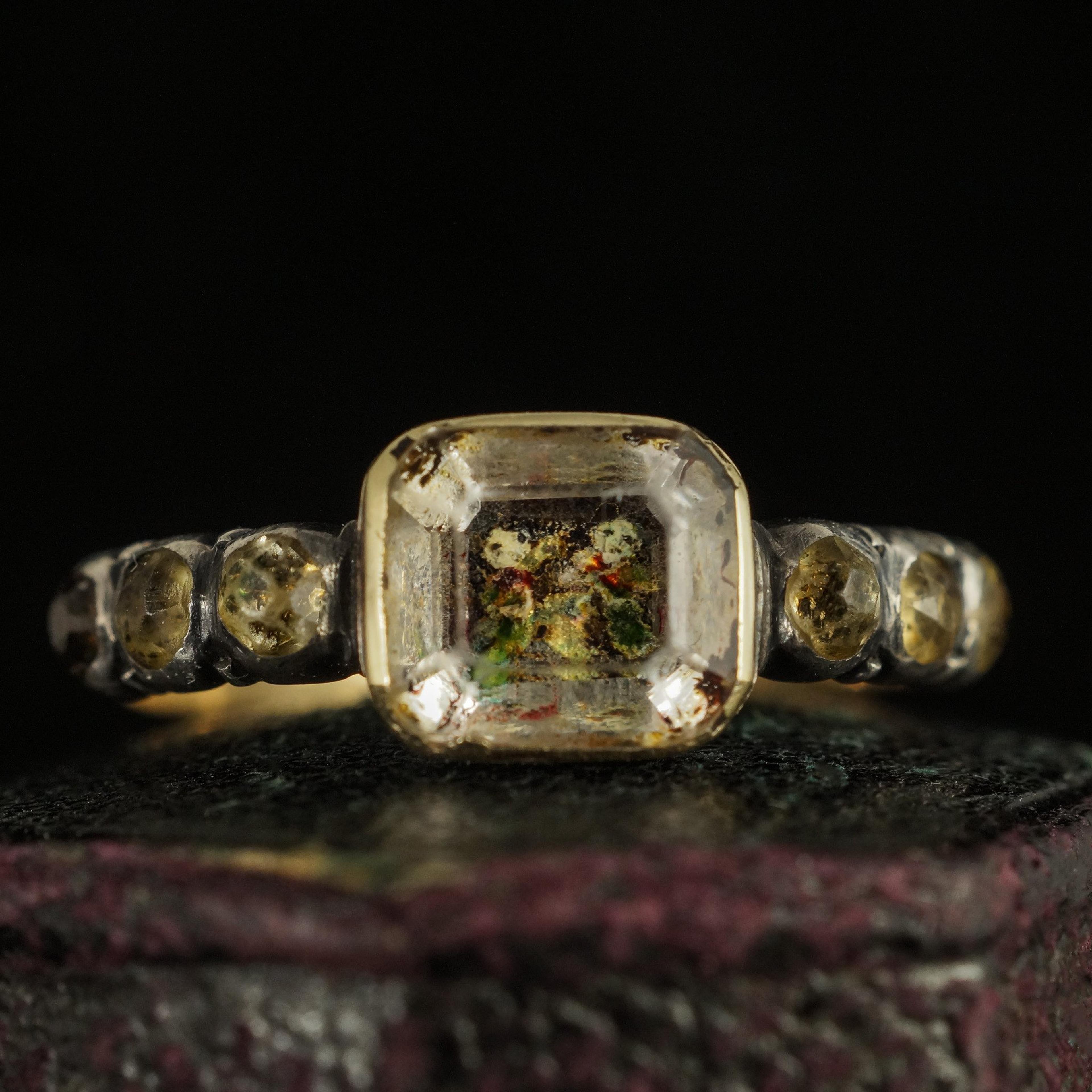Stuart crystal takes it's name from the rock crystal jewelry worn by loyalists to the Stuart monarchy following the 1649 execution of King Charles I. Early Stuart crystal jewels typically feature a miniature of the King, or his cipher, under faceted rock crystal. These mourning pieces were worn discreetly (if not outright secretly) by supporters of the crown in the tumultuous years after his death. Later in the 17th century, Stuart crystal was made and worn for more personal (and less political) reasons, including in memory of lost loved ones. This rare c. 1700 Stuart crystal ring features a scene of two enameled cherubs dressed in colorful robes, a similar theme used in the mourning ring for James II at the V&A Museum in London. The decoration is in fair condition, originally the angels would have held a wreath, crown, or skull between them with a cipher at the center. The pink foil that characterizes later Stuart crystal jewelry is faintly visible along the inner edges. The shoulders are set with brilliant cut rock crystal in silver, and the mounting is fashioned in 15k yellow gold with a flat hoop and fluted details at the back of the head.
thedetails
- Materials
15k yellow gold, silver, rock crystal, enamel
- Age
c. 1700
- Condition
Good to Fair - the body of the ring is excellent condition, the pink foil backing is visible only along the outer edges, cipher, and angels have eroded
- Size
US 8.25, sizing is possible but not recommended due to the great age of this piece; 7.9mm x 7mm head, 2.1mm hoop
Need more photos?
Send us an email to request photos of this piece on a model.


Aboutthe
StuartEra
1603 — 1714
A new era dawned when Queen Elizabeth — the last Tudor monarch — died without an heir. The monarchy was temporarily displaced by the Commonwealth of England from 1649 to 1660 by Oliver Cromwell, but was restored — aka "The Restoration" — as Charles II was invited to take the throne. His father, Charles I, had been beheaded in 1649, and most of the jewelry we see from this period was at least stylistically related to this controversial political event. During this time, discoveries and innovations transformed England and Scotland, which were conjoined after a long period of feuding. Coffee became a new trendy beverage, with 600 coffeehouses in London all catering to a different type of clientele. This imported novelty beverage was possible because of the UK's rapidly expanding worldwide trade network. Not yet interested in acquiring territories, the island nation focused instead on making a fortune exporting wool and importing goods like slaves, sugar, and tea. Everyone (except the enslaved people, of course) benefited from the new merchant class that arose, and in the process the Royal Navy became the most powerful in the world. The look of London changed, too — after the Great Fire of 1666, Christopher Wren was hired to rebuild the city's damaged churches, with his greatest accomplishment being St. Paul's Cathedral.
